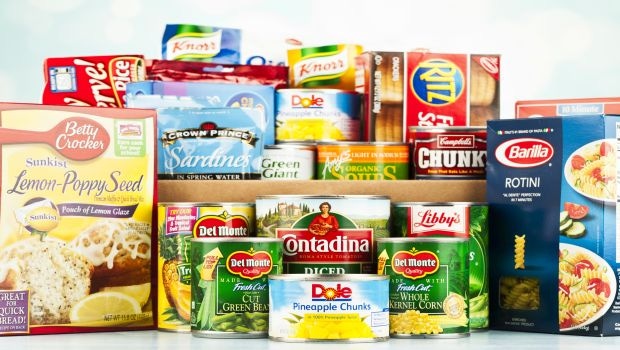A new study examined more than 400 CPG companies with annual U.S. retail sales of more than $100 million and ranked them on the basis of their growth performance in 2014. Topping the growth leader list of large companies for 2014 are Johnson & Johnson, Mondelēz International and PepsiCo. The leaders among midsize companies are Mead Johnson Nutrition, Keurig Green Mountain, and Monster Beverage Corporation. Among small companies, Teva, SkinnyPop Popcorn, and Kind lead the list.
March 12, 2015

For many manufacturers of consumer packaged goods (CPGs), 2014 was an elusive year for growth; however, small- and medium-size companies continued to take market share from their larger competitors, a trend that has been at work for the last several years, according to a new study by The Boston Consulting Group (BCG) and Information Resources Inc. (IRI).
Overall industry growth in 2014 was 2.1 percent, compared with 1.6 percent in 2013. Small and midsize companies gained 0.7 share points, worth $4.5 billion, from larger competitors. Since 2009, smaller companies have taken two full share points, worth $18 billion.
For the third year in a row, BCG and IRI examined more than 400 CPG companies with annual U.S. retail sales of more than $100 million and ranked them on the basis of their growth performance. The “Which Companies Drove U.S. CPG Growth in 2014?" study, which includes both public and private CPG companies and focuses on what consumers actually bought in measured channels as opposed to what factories shipped, uses a combination of three metrics: dollar sales growth, volume sales growth, and market share gains. It also analyzes trends driving performance in the sector.
BCG and IRI generated three Top 10 lists of the best-performing companies: small companies ($100 million to $1 billion in IRI-measured retail sales), midsize companies ($1 billion to $5 billion), and large companies (more than $5 billion). Making it onto the list signifies that a company has performed at the top of its class during the past year and has growth momentum in the marketplace.
Topping the growth leader list of large companies for 2014 are Johnson & Johnson, Mondelez International and PepsiCo. The leaders among midsize companies are Mead Johnson Nutrition, Keurig Green Mountain, and Monster Beverage Corporation. Among small companies, Teva, SkinnyPop Popcorn, and Kind lead the list.
“Our Top 10 lists consist of companies of many sizes with brands in multiple categories and price tiers, making one thing clear—growth is possible for all types of CPG manufacturers," said Dr. Krishnakumar (KK) Davey, president, Strategic Analytics, IRI. “In fact, PepsiCo, one of the largest CPG companies, grew nearly $1 billion in measured channels last year, three times more than any other company, and four to five times more than other comparable-size companies."
Across the three size segments, winners capitalized on broad CPG industry trends. The impact of macroeconomic volatility and price inflation in high-protein products, such as meat and dairy, was felt across food and beverage segments. Companies such as Land O’Lakes, WH Group, and Jack Link’s were able to take advantage of pricing opportunities as consumers traded both up and down, creating growth for the premium and value segments. Other examples include Hershey’s, whose sales growth was driven by premium brands such as Brookside, and Schreiber, which showed growth in the value cheese segment. Population and spending growth in three key demographics—seniors, Millennials, and Hispanics—led to opportunities for companies such as Gruma, a tortilla manufacturer, and PepsiCo, which has products that cater to the tastes of both Millennials and Hispanics.
Consumers also demanded more “better for you" products and refused to compromise on health, taste and convenience. Brands that were able to meet this demand—including Campbell’s Bolthouse Farms, Mondelēz’s belVita and SkinnyPop ready-to-eat popcorn—were rewarded with growing sales. The expansion of e-commerce in grocery created opportunities for early movers that exploit digital sales channels, such as Kind.
You May Also Like




.png?width=800&auto=webp&quality=80&disable=upscale)